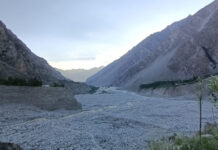Who is unaware of the facts related to global warming nowadays?
The change in the rainfall patterns, rising sea level and increasing numbers of storms and floods have manifested the gravity of the matter.
No one can deny that these changes are due to human activities, mainly due to industrialization. Meanwhile, when global warming and its repercussions have become a debatable issue, recent research revealed a new and bright side of climate change.
We all are aware that the rise in sea level is one of the impacts of climate change.
You may see two prominent processes in the ocean due to high water temperature; increasing incidents of glaciers and snow caps melt, and expansion of the water level. In return, these two phenomenon rises the sea level.
However, a recent study done by a team of scientists from Swedish and German universities presented a different side of the story.
It showed that climate change in sea can be in favor of marine life. To do so, the research team investigated a phenomenon from the past to observe the possibility of its repetition in the future. But, what was that phenomenon?
Somewhere around in the 1930s, an outburst of disease in the ocean caused the death of a huge population of a specific type of seagrass in North and South Atlantic Oceans. Seagrass, unlike the grass of the land, can produce a flower. They produce food for the ocean and hence, are an important part of the ocean life. If you want to look for the seagrass, just dive in somewhere in the shallow coastal waters as they are present there in great numbers.
Janina and her team focused on a specific type of seagrass, Eelgrass, which was massively destroyed due to the disease outburst in the 1930s.
Reportedly, the cause of death was the presence of a single-celled marine organism, slime mold. Increase in slime molds caused the appearance of lesions on the eelgrass, after which the whole population started to die off in the past.
Now, when the team got to know about the presence of that deadly slime molds in the eelgrass of Baltic Sea, they were surprised since none of the massive decay has been reported due to the reoccurrence of slime molds in the eelgrass of the sea.
This intrigued Janina and her team to conduct a study to check whether global temperature rise has altered the interaction of slime molds and eelgrass.
The team took the uninfected eelgrass seeds and raised it during a year. Whereas, the slime molds were collected from the infected eelgrass. Scientists then added slime molds in the eelgrass under low salinity and high temperature. These salt and temperature ranges were used since salinity and temperature are decreasing and increasing respectively in the Baltic Sea.
Studies concluded that the combined effect of high temperature and low salinity resulted in the lesser negative impacts of slime molds on eelgrass. This reduces the chances of the future outburst of disease on eelgrass of the Baltic Sea.
Janina and her team have led us to an optimistic future where we can, at least give the reference of this research in the debates of climate change. Lastly, an extensive study is required to investigate if climate change can bring any positive change in our environment.
This will help us to design a better environment in the future.





























